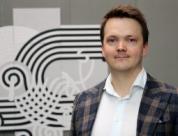2016 Recipients
View recipients of the Rutherford Foundation Trust for 2016
2016 Rutherford Foundation Trust Recipients
New Zealand Postdoctoral Fellowships

Dr Carolyn Boulton, Victoria University of Wellington
Slipping fast and slow: How sediments influence Hikurangi subduction zone seismic hazard
Subduction zones are formed where one tectonic plate plunges beneath another. These zones produce the largest earthquakes and tsunami on Earth. The North Island of New Zealand overlies the Hikurangi subduction zone (HSZ), an enormous plate-boundary fault that accommodates westward subduction of the Pacific Plate. New geodetic and seismological data have highlighted profound variations in the HSZ’s seismic behaviour and provided evidence for complex interplay between seismic earthquakes and aseismic creep, that is, between fast and slow slip on the plate boundary.
The HSZ fault occurs in Late Cretaceous-Paleogene (70-32 million-year-old) marine sediments that were deposited on both the Australian and Pacific Plates prior to the initiation of subduction. Equivalent marine sediments are exposed across the eastern North and South Islands, providing an ideal opportunity to document variations in sediment composition and collect samples for detailed analyses. This sequence of sedimentary rocks has never been investigated with the aim of understanding Hikurangi subduction zone seismic behaviour and potential hazards. Indeed, there is an intriguing spatial correlation between changing sediment composition and the transition from predominantly aseismic-to-seismic HSZ fault behaviour near Hawke’s Bay.
In this project, Dr Boulton will measure – for the first time – how the frictional strength and stability of Late Cretaceous-Paleogene marine sediments varies from North to South along the HSZ. Since pressurized fluids also affect fault strength, she will determine the conditions required to generate and sustain high fluid pressures in these same fault-forming sediments. Laboratory data will be incorporated into numerical models that simulate faulting in order to understand how sediment composition influences subduction zone mechanics, fluid flow, and potential earthquake rupture scenarios. Ultimately, it is hoped that the proposed research will provide a better understanding of earthquake rupture mechanisms and the hazard that the Hikurangi subduction zone poses to New Zealand society.

Dr Matthew Cowan, University of Canterbury
Materials and process engineering for low-energy olefin/paraffin separations
Take a moment to consider the objects around you. Do you ever wonder where they came from? What went in to making them? How many steps removed that object is from the natural resources it’s made of? Undoubtedly, there is an object containing plastic nearby. Plastic is now integral to the quality of human life and vital to scientific advancement. From providing water for refugee camps, to spacecraft, electronics, and construction, plastic is ubiquitous.
The story of where plastic comes from is fascinating. It’s amazing to think that the plastic objects around you were once an olefin gas produced from oil at 800°C in a cracking process that also produced a paraffin gas so physically similar that separating them is one of the most energy intensive processes in the world. That hot olefin/paraffin gas mixture was compressed to a pressure of 20 atmospheres and cooled to negative 25°C, then distilled 200 times until the olefin gas was finally pure enough to be polymerized into the plastic used to make… your ballpoint pen. If you imagine the enormous amount of energy you spent was worth it to produce your pen, then the world agrees with you. Humanity invests around 0.3% of the total energy we produce for separating and purifying ethylene gas, just one of the olefins used to make plastics. That amount of energy is greater than is produced by the entirety of New Zealand.
In this project, Dr Cown will design and create a low-energy olefin/paraffin separation process that will have a significant impact on New Zealand and the rest of the world. The global energy savings alone are enormous. Economically and environmentally, high-producing countries such as the U.S. could save ca. $3 billion in energy, equating to ca. 50 million metric tons of carbon dioxide from coal-fired power plants.

Dr Francis Hunter, University of Auckland
Using Next-Generation Genetics to Understand Drug Resistance in Breast Cancer
Breast cancer is one of the most common malignancies in New Zealand, with 3000 diagnoses and 600 deaths annually. Approximately one-quarter of breast cancers are driven by amplification (increased numbers of copies) of a gene known as HER2, which stimulates the growth of tumour cells. Breast cancers that test positive for HER2 amplification grow more rapidly and are more likely to metastasise (spread) and recur after treatment.
The drug trastuzumab (commonly known by its commercial name, Herceptin), works by inhibiting HER2 and hence halts the growths and spread of HER2-positive breast cancer. Unfortunately, a significant fraction of breast cancer eventually returns despite being treated with trastuzumab, leading to very aggressive disease and poor prognosis.
In 2013, a new drug, trastuzumab emtansine (also known as T-DM1 or Kadcyla), was approved for the treatment of HER2-positive, metastatic breast cancer that has progressed after prior treatment with trastuzumab. T-DM1 is a member of a new class of pharmaceuticals known as “antibody-drug conjugates” and is comprised of trastuzumab (which is an antibody) chemically attached to a potent cancer-killing drug, mertansine (DM1). Clinical trials have demonstrated that, while T-DM1 is effective as a second-line treatment for metastatic breast cancer, some patients do not respond to the drug at all and, for others, the emergence of resistance to T-DM1 results in temporary medical benefit.
In this study, Dr Hunter will use cutting-edge genome engineering and next-generation DNA sequencing technologies to identify genes that control and predict the sensitivity and resistance to T-DM1 and other HER2-targeting drugs in breast cancer. The ultimate goal of this research is to understand the mechanisms of resistance to T-DM1 and developing diagnostic tools to predict sensitivity in order to aid in the optimal clinical use of this drug and allow for improved treatment outcomes of these high-risk breast cancers.

Dr Benjamin Mallett, University of Auckland
Shining a light on the interface: Spectroscopy of superconductor thin-film meta-materials
With this Fellowship, Dr Mallett aims to develop a better understanding of the complex (and often mysterious) physics behind superconductors. A superconductor can conduct electricity with no resistance, but only at very cold temperatures – more than one hundred degrees below freezing. Because superconductors have no electrical resistance, they are needed for a variety of machines, such as medical MRI scanners and powerful magnets. However, to make the next generation of more-efficient wind turbines, portable MRI scanners, or electric intercontinental passenger-aeroplanes for example, we will need the unique properties of new materials called high-temperature superconductors. High-temperature superconductors work at higher temperature than normal superconductors (although still about one hundred degrees below freezing) and can carry massive electrical currents in tiny wires. On the world stage, New Zealand leads the way in the industrialisation of this special class of superconductors. There are still tricky problems to be solved though before their full potential can be realised, and one of these problems goes right back to the beginning; what makes them superconductors at all?
Whilst working on this problem, Dr Mallett made a startling discovery that a superconducting material sandwiched between a specific magnetic material completely changes the behaviour of the superconductor. This unique ‘superconductor sandwich’ meta-material gives us a novel way to figure out how these superconductors work as well as a new way to control their properties. Also, the superconductor sandwich is unique in that its performance actually improves in a magnetic field, and this may have important implications for the burgeoning superconductor industry in NZ. In this project Dr Mallett will shine light on these superconductor sandwiches, quite literally, to study their electronic properties and understand how the magnetic material interacts with the superconductor at the interface. Hopefully, the project will help New Zealand to be at the forefront of this exciting research area, and at the same time grow New Zealand’s capability to study the broader class of thin-films and meta-materials.

Dr Nicholas Monahan, Victoria University of Wellington
Does coherence make organic solar cells more efficient?”
Climate change necessitates a shift from fossil fuels to renewable energy sources. The inexpensive processing costs of organic solar cells should make them suitable to compete with cheap methods of electricity generation such as coal and natural gas, but their adoption is limited by low efficiencies. We lack the ability to design more efficient devices because it is not clear what causes rapid generation of charges in organic solar cells. Recent proposals suggest that fast, coherent formation of free charges is essential for creating high efficiency organic solar cells, but there is no current experimental technique that can unambiguously verify this claim.
In this project, Dr Monahan aims to develop a laser-based technique capable of measuring coherent dynamics during the formation of free charges in organic solar cells and applying it to model systems. The results of this research will indicate whether coherence is essential for fast, efficient charge separation and under what circumstances it occurs. This will lead to design principles for the engineering of new, more efficient organic solar cells.
Cambridge Rutherford Memorial PhD Scholarships

Ms Efthimia Christoforou, University of Cambridge
The role of placental endocrine function in determining the health of the mother and her offspring
Complications during pregnancy are common and threaten the life and health of the mother and her developing baby. Such complications include pregnancy-induced hypertension, gestational diabetes and abnormal fetal growth. Impaired fetal growth can also have more long term consequences such as an increased risk of the baby developing ischaemic heart disease, hypertension and type-2 diabetes as adults, while mothers who develop a pregnancy complication are more likely to suffer from cardio-metabolic diseases in later motherhood. Thus, it is important to understand the regulation of fetal growth and maternal health during pregnancy.
The placenta is a transient organ that interfaces the mother and fetus. It is responsible for transporting nutrients from the mother to the fetus, and additionally produces a variety of hormones. However, we currently do not fully understand the significance of these placental hormones on the fetus in materno-fetal health.
During her PhD at Cambridge University, Ms Christoforou will work with leading experts to resolve the question of how the memory of a pregnancy that is complicated by altered placental hormone signalling, is transmitted and maintained in the mother and offspring – hence making them more susceptible to metabolic and cardiovascular disease in later life. This will be accomplished using sequencing techniques to assess changes in the genome of the mother and fetus during pregnancy and relate this information to long-term health.
The unique combination of genetic models and techniques available at the University of Cambridge enables a comprehensive assessment of the role of placental signalling in the regulation of fetal growth, maternal health and long-term wellbeing, which is important for understanding the pathology of pregnancy complications and disease programming.

Ms Jessica Hiscox, University of Cambridge
The impact of poverty focused initiatives on wildlife perception and human-wildlife conflict
Conservation and poverty reduction are linked issues; each has the potential to aid or inhibit the other. However, more studies are needed in order to better understand the impacts of integrating both poverty and conservation goals and also to guide future projects and policies.
One area of potential integration between community and conservation work is in regards to wildlife perception and human-wildlife conflict. How people perceive and conflict with the wildlife around them are two areas that have potential to significantly impact both community and conservation work, yet most studies on wildlife perception and human-wildlife conflict keep the impacts of conservation and poverty reduction separate.
In this project, Ms Hiscox aims to use a series of projects run by Fauna and Flora International (FFI) in the Cardamom Mountains in Cambodia as case studies to look at the perception of, and conflict with, wild animals by the local people following increasing populations of wild animals such as crocodiles and elephants. She will also research how perceptions and conflicts are influenced by poverty interventions like increased food availability, and how changes to perception and conflicts affect the conservation efforts of the elephants and crocodiles.
It is hoped that these studies will provide additional evidence needed to guide future projects as to the consequences and benefits of an integrated approach between poverty reduction and conservation goals in regards to wildlife perception and human wildlife conflict.
International PhD Scholarship (a grant-in-aid)

Mr Maxim Jeffs, University of California, Berkeley,
Homological Mirror Symmetry
Mr Jeffs will use his PhD Scholarship to study a field of mathematics termed ‘mirror symmetry’. Mirror symmetry is a modern field of mathematics – it studies ideas from theoretical physics that provide unexpected connections between algebraic and differential geometry. These ideas originate from string theory, a theory of high-energy physics that attempts to reconcile various inconsistencies in our current theoretical understanding of the universe by providing a quantum theory of gravity. Many different mathematical models of string theory exist, and studying their relationships leads to unexpected connections between these seemingly unrelated mathematical objects. A large part of the reason for the recent intense interest in mirror symmetry is the discovery of mirror phenomena in several well-understood areas of mathematics with no obvious relation to high-energy physics, such as enumerative geometry. Such examples are particularly amenable to study; by understanding them, Mr Jeffs aims aim to clarify the little-understood mathematical nature of mirror symmetry, and thereby also the mathematical foundations of theoretical physics.
